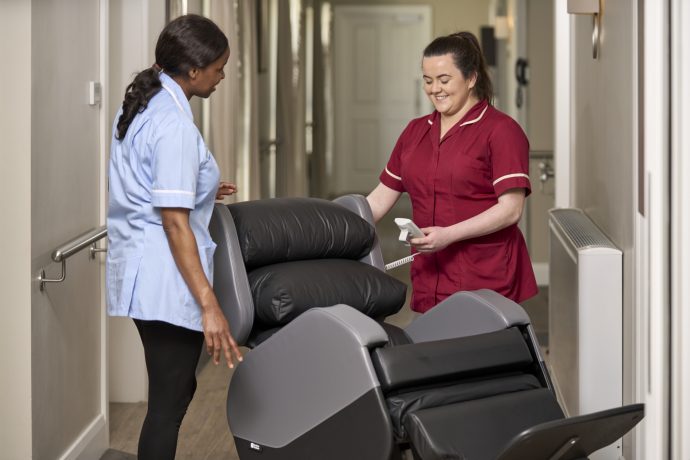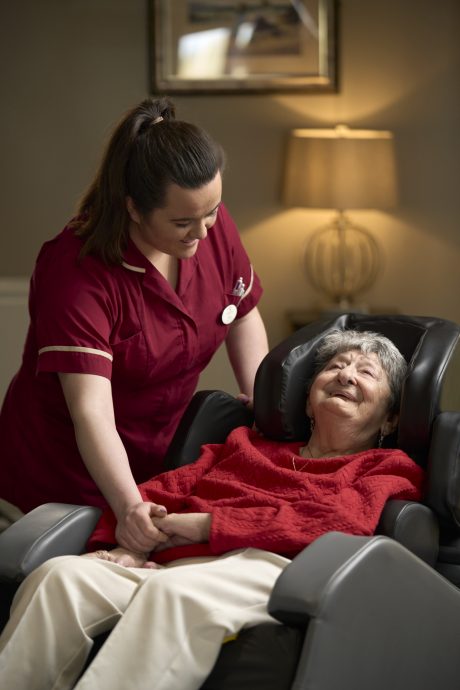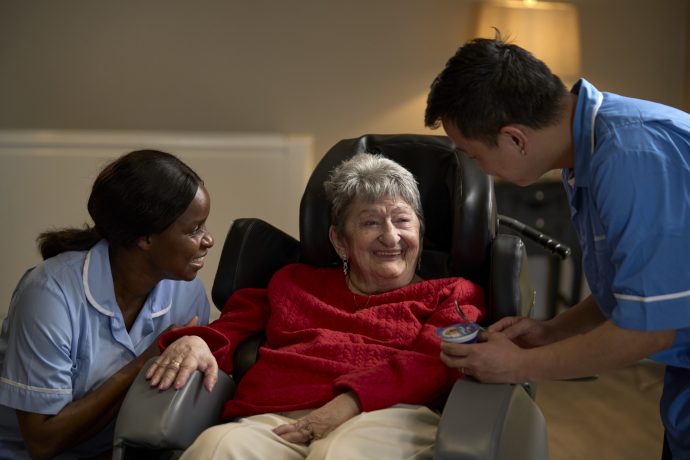
2nd September 2025
Empowering clinicians with expert-led training on clinical seating, pressure injury prevention, and best practice.
Learn More

Let our online product finder guide you through our simple steps to choose the chairs that best meet your patient’s needs.
Seating Solution FinderThe Envelo cushion provides excellent pressure redistribution and comes as standard on all Seating Matters chairs, meeting the clinical needs of most clients.
Explore Envelo RangeSeating Matters specialises in clinical, therapeutic seating solutions designed to improve patient care and safety, offering products for pressure injury prevention, postural support, and mobility assistance in healthcare settings.
Learn MoreDiscover how Seating Matters has transformed lives with our innovative seating solutions - read our inspiring customer success stories now!
Customer StoriesUsed in academia, in clinical practice and with caregivers around the world to guide their practices around specialist seating.
Download Free HandbookWe take it back to basics, explaining the importance of good sitting posture and why it is important.

In the past, for a person who is at risk of pressure injuries it has been common practice for the focus to be placed solely on the bed and the mattress. For this reason, clinical practice, research and technology has become highly developed in this area and as a result, high risk patients tended to be nursed primarily in highly functional beds and mattresses. These therapeutic surfaces are often of a high quality but are not the entire solution. Imagine being in bed for a prolonged period of time – hours, days, weeks, perhaps even months or years. This can have a significant cognitive and psychological impact on a person.
In this blog post we take things back to basics, explaining the importance of good sitting posture.
By approximately ten months of age, a typically developing infant demonstrates good sitting posture. The infant sits with the pelvis and spine in a straight line with the head balanced over the body, with both hands free to interact with the environment. This is an efficient posture, i.e., it requires the least amount of exertion to maintain.

The position of the pelvis is the basis for good sitting posture. If it is tilted to the front, back, or side due to a postural deformity or inadequate support, the muscles in the hips, trunk and neck must work harder to keep the person from falling over. If they are unable to maintain a midline position this can lead to poor posture.
Improper posture can lead to imbalanced weight distribution which may eventually lead to pressure injuries and other, sometimes fatal complications.
The ability to reposition is often diminished in the very old, the malnourished and those with acute illness.(1,2) If gravity pulls the person into a poor sitting position over a period of time, it can be difficult for them to bring their body back to midline to correct that posture. Support from the correct chair can reduce poor sitting posture and help with positive repositioning for pressure management.
“A seating assessment can make a major difference to comfort, positioning and quality of life for years to come.”
– Martina Tierney, Clinical Director & Author of The Clinician's Seating Handbook
Don’t underestimate the importance of a thorough, clinical seating assessment. The clinician carrying out the assessment should identify the needs of that person and help inform their decision on the type of chair they require to meet their needs, both now and in the future. Think about that long haul flight. The pain you endure during that flight gives you some idea of the hard work that goes into sitting all day, every day.
For the person being assessed, the time spent doing a Seating Assessment can make a major difference to their comfort, positioning and quality of life for years to come.
Today, there is a shift towards early mobilisation as an important aspect of the rehabilitation process. The prescription of correct seating can enable early mobilisation by supporting the patient to get out of bed earlier. As a result, patients can experience less muscle atrophy, increased strength and conditioning with the effect of reducing their length of stay and improving patient flow.
Evidence indicates that prolonged bed rest may not be the sole form of prevention.(3) When therapeutic seating is used correctly, there is much improvement in a patient’s functioning to aid recovery and improve their health. Physiologically, a person is able to swallow, digest and eliminate in a sitting posture with ease, much more so than when they are lying in bed. In addition, improved sitting posture can aid respiration, with oxygen levels recorded as higher in users of therapeutic seating as opposed to those in standard seating. (4) Improved oxygen saturation levels allow tissues to be more oxygenated, therefore reducing the risk of skin breakdown.
Good sitting posture can facilitate a better quality of life. It improves social interaction and self-image, giving significant psychological benefits. Sitting upright will also help improve a person’s functional ability for simple tasks such as eating and drinking which aids nutrition, hydration and productivity.
A lack of therapeutic seating for daytime use could be counterproductive for patients on a pressure management system for supine positioning. The use of clinical, therapeutic seating throughout the day ensures that it is possible for prevention and healing to occur regardless of where the patient is located. This shift towards providing clinical, therapeutic seating through the day should be seen as a compliment to the use of therapeutic mattresses and beds as it allows prevention, treatment and healing to continue while in a seated position.
This excerpt has been taken from Edition 6.1 of The Clinician's Seating Handbook. You can download your copy here!
1. Fisher, A. R., Wells, G., & Harrison, M. B. (2004). Factors Associated with Pressure Ulcers in Adults in Acute Care Hospitals. Holistic Nursing Practice, 18(5), 242-253.
2. Lindgren, M., Unosson, M., Fredrikson, M., & Ek, A. (2004). Immobility - a major risk factor for development of pressure ulcers among adult hospitalized patients: A prospective study. Scandinavian Journal of Caring Sciences, 18(1), 57-64.3.
3. Norton, L., & Sibbald, G. (2004). Is bedrest an effective treatment modality for pressure ulcers? Ostomy Wound Management, 50(10), 40-51.
4. Casey, J., & Gittins, L. (2013). Use of tilt-in-space in seating systems for adults with physical disabilities. Physical Therapy Reviews, 18(4), 285-299.
The Clinician's Seating Handbook is used in academia, in clinical practice and with caregivers around the world to guide their practices around specialist seating.

2nd September 2025

15th August 2025

15th August 2025